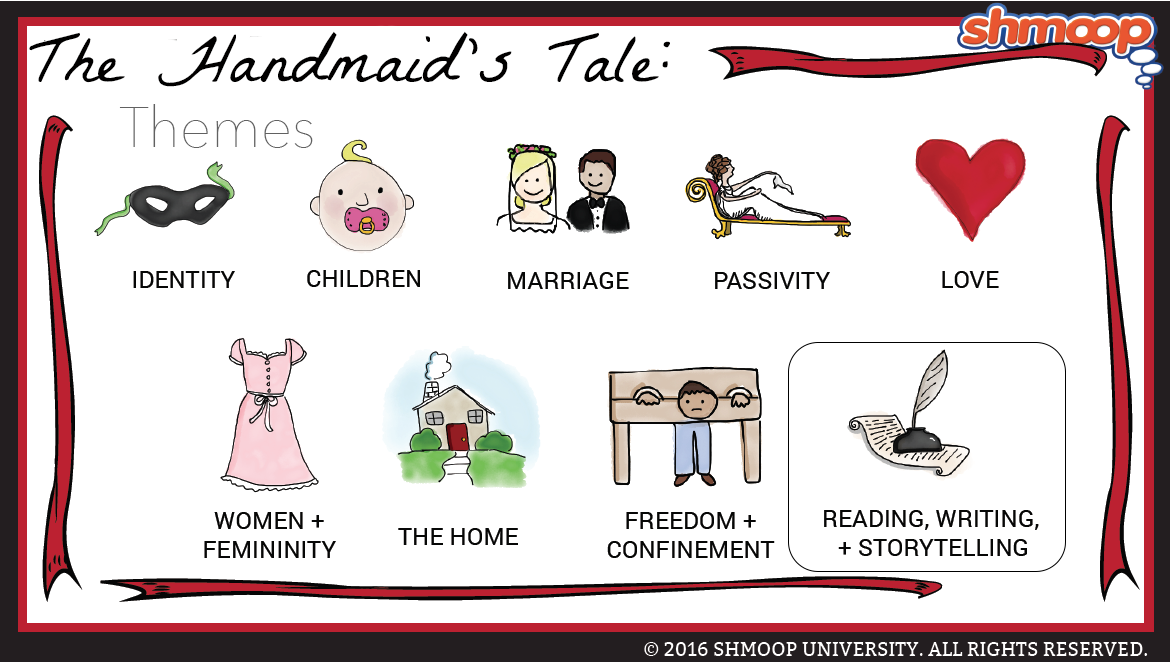 (Click the themes infographic to download.)
(Click the themes infographic to download.)
We never quite know what's true in The Handmaid's Tale; even when people state their names, they're lying. Throughout the book we're reminded that this is a story and that the narrator is altering some of the details. The narrator wishes she could change the events that happened to her through retelling them, or what she calls "reconstruction." Even the epilogue, with its "Historical Notes," reinforces the idea that this is a tale, a story, and that the manner of the telling is as important as what the narrator reveals through it.
Questions About Reading, Writing, and Storytelling
- In what ways does the book connect reading with masculinity?
- At the Center the narrator frequently heard the phrase, "Pen is Envy" (29.33). This can be seen as a pun on the phrase "penis envy." How do people at the Center manipulate this idea? Are the two phrases really interchangeable?
- Why aren't women supposed to read? Why do you think books are outlawed and the Bible is kept locked up?
- What is the effect of the book's epilogue? What purpose does it serve?
Chew on This
By focusing on reading as a forbidden activity, Atwood underscores the vital importance of the narrator's efforts to tell her story, no matter what the cost.
Because the narrator so frequently admits that she's rearranged facts, wishes she could tell different stories, and lies to other characters, nothing she says can be trusted.